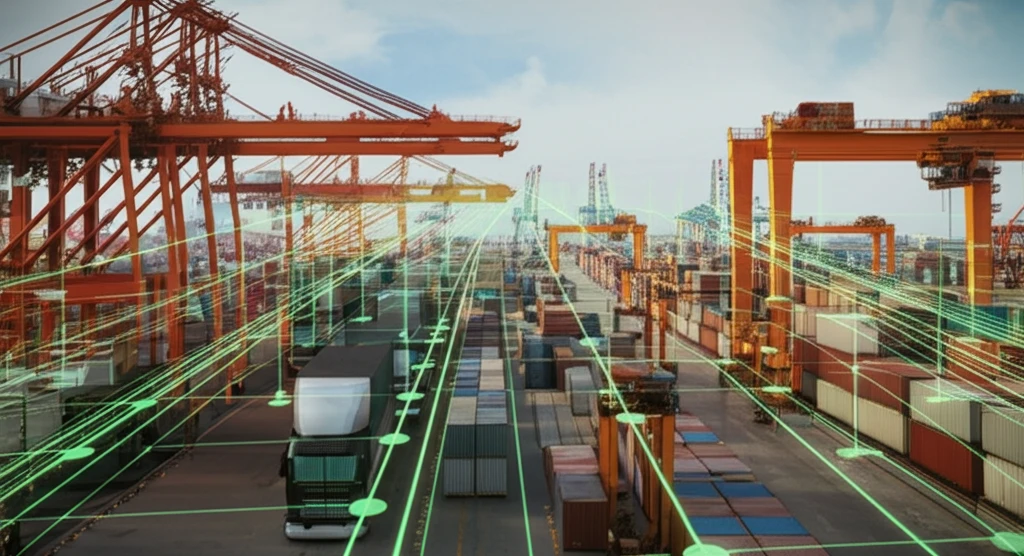
Truck Routing Revolution: Cutting Costs and Cleaning the Air
"Discover how multi-objective optimization is transforming inter-terminal transportation, making ports greener and more efficient."
Imagine a world where bustling ports aren't synonymous with pollution and congestion. The reality is, the exponential growth of global trade has put immense pressure on urban port areas, leading to severe traffic bottlenecks and harmful environmental impacts. But what if we could harness the power of data and smart technology to revolutionize how trucks navigate these complex environments?
Innovative strategies are emerging to tackle these challenges head-on. Ports worldwide are embracing development plans focused on minimizing their environmental footprint, particularly in urbanized zones. The key lies in finding solutions that not only address ecological concerns but also enhance economic performance. This means embracing practices, processes, and methods that simultaneously support green initiatives and sustainable growth.
This article explores the groundbreaking concept of multi-objective inter-terminal truck routing, a sophisticated approach that specifically considers truck emissions alongside traditional factors like cost and efficiency. We'll delve into cutting-edge algorithms, cloud-based decision support systems, and real-time data integration that are paving the way for a cleaner, more efficient future for port logistics.
What is Multi-Objective Inter-Terminal Truck Routing?

Inter-terminal transportation (ITT) refers to the movement of containers and cargo between different areas within a seaport. As port activity increases, so does the need to optimize ITT, not just from an economic perspective, but an environmental one, too. It’s about finding the sweet spot where efficiency meets ecological responsibility. Business analytics can play a critical role, shaping organizational practices and processes to improve both economic and environmental performance.
- Economic Sustainability: Improving efficiency, productivity, security, and safety within ports.
- Environmental Sustainability: Reducing noise, emissions, and the overall environmental impact on surrounding neighborhoods.
- Multi-Objective Optimization: Balancing economic and environmental objectives to find innovative, viable solutions.
The Road Ahead: Sustainable Ports for a Greener Future
The multi-objective optimization in the context of port-related ITT considers aspects and restrictions of port-related ITT operations. Collaboration of trucking companies with small subcontractors is a common business model in many ports. A 'ready-to-use' cloud-based decision support system can simplify the generation of solutions for decision-makers aiming to find a good compromise between different objectives.
